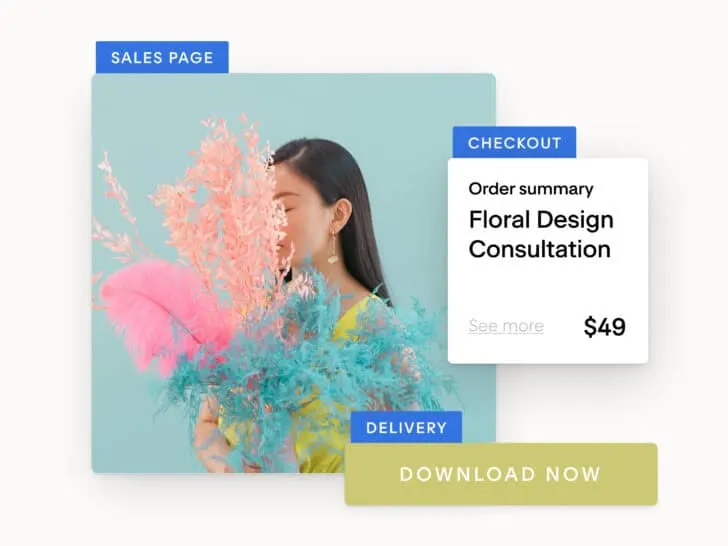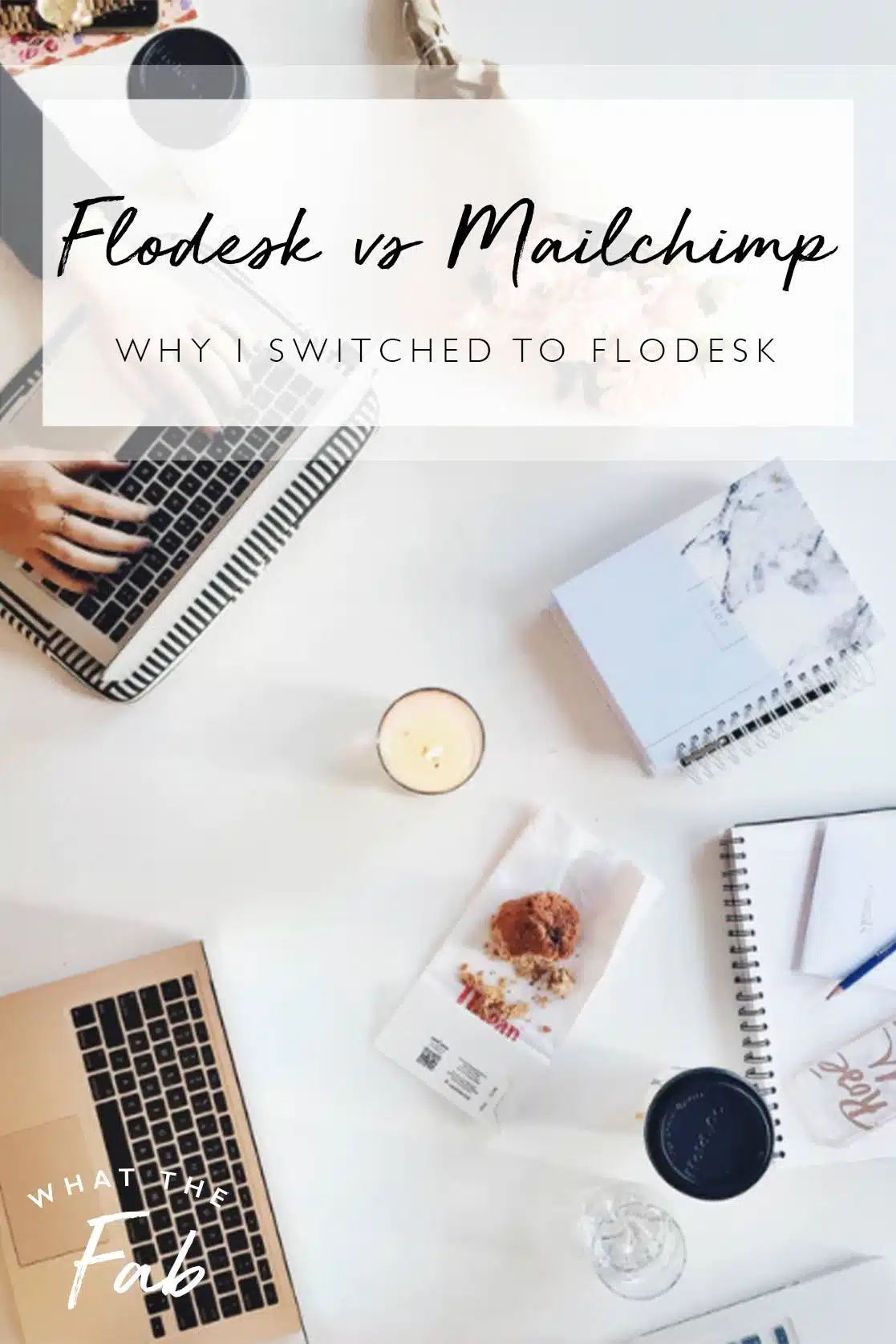
Getting into all the deets on Flodesk vs Mailchimp today! I don’t usually write blogging/business posts on What The Fab, but I do get asked by blogger friends and readers what email marketing platform I recommend so I thought I’d share an in-depth Flodesk review here since that is my email marketing software of choice. I’ve also used Mail Chimp in the past, so I have a good understanding of both email service providers and the pros and cons of each!
Psst! Flodesk offers a free 14-day trial, plus half off their monthly pricing for your first year if you use my referral link or code WTFAB50!
Small businesses and large alike need a solid email marketing strategy. It’s simply not enough to have an engaged social media presence—what happens if that platform or your account goes poof ? Trust me, I’ve had time to think about this when my Instagram account was hacked (thankfully, I got it back though). Email marketing is still the best way to communicate with your customers or readers.

Flodesk vs Mailchimp Review
Aesthetics
Flodesk takes the cake here for sure. Their email templates are aesthetic af. You can add your business’ brand colors so your emails are consistently branded and feel like you. Your email newsletter should feel like a cohesive experience and extension of your website. Of course, you can change colors in Mailchimp as well, but Flodesk just makes it really easy to do that.
Flodesk’s templates are very imagery focused, and you don’t have to be a designer to make your emails beautiful. Versus when I look back on my Mailchimp emails, I cringe. They were so ugly compared to my beautiful Flodesk emails! While I’m sure you can do some custom HTML work with stylish imagery in Mailchimp, nobody has time for that. I can whip up my Flodesk emails in less than 10 minutes and they’are always going to be gorgeous thanks to their stunning templates.
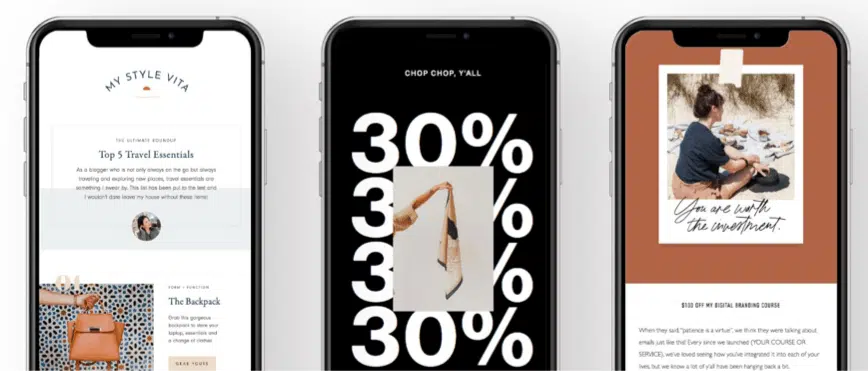
UX and Usability
Again, Flodesk is the clear winner here. Their email marketing software is very drag and drop. It’s very intuitive and easy to youse. Versus with Mailchimp, I remember getting super frustrated because things weren’t looking how I wanted them to, especially when I was trying to deal with columns and formatting. I consider myself pretty tech-savvy, and I still had issues with Mailchimp. So yeah, I’d say Flodesk is the better email marketing tool in this category.
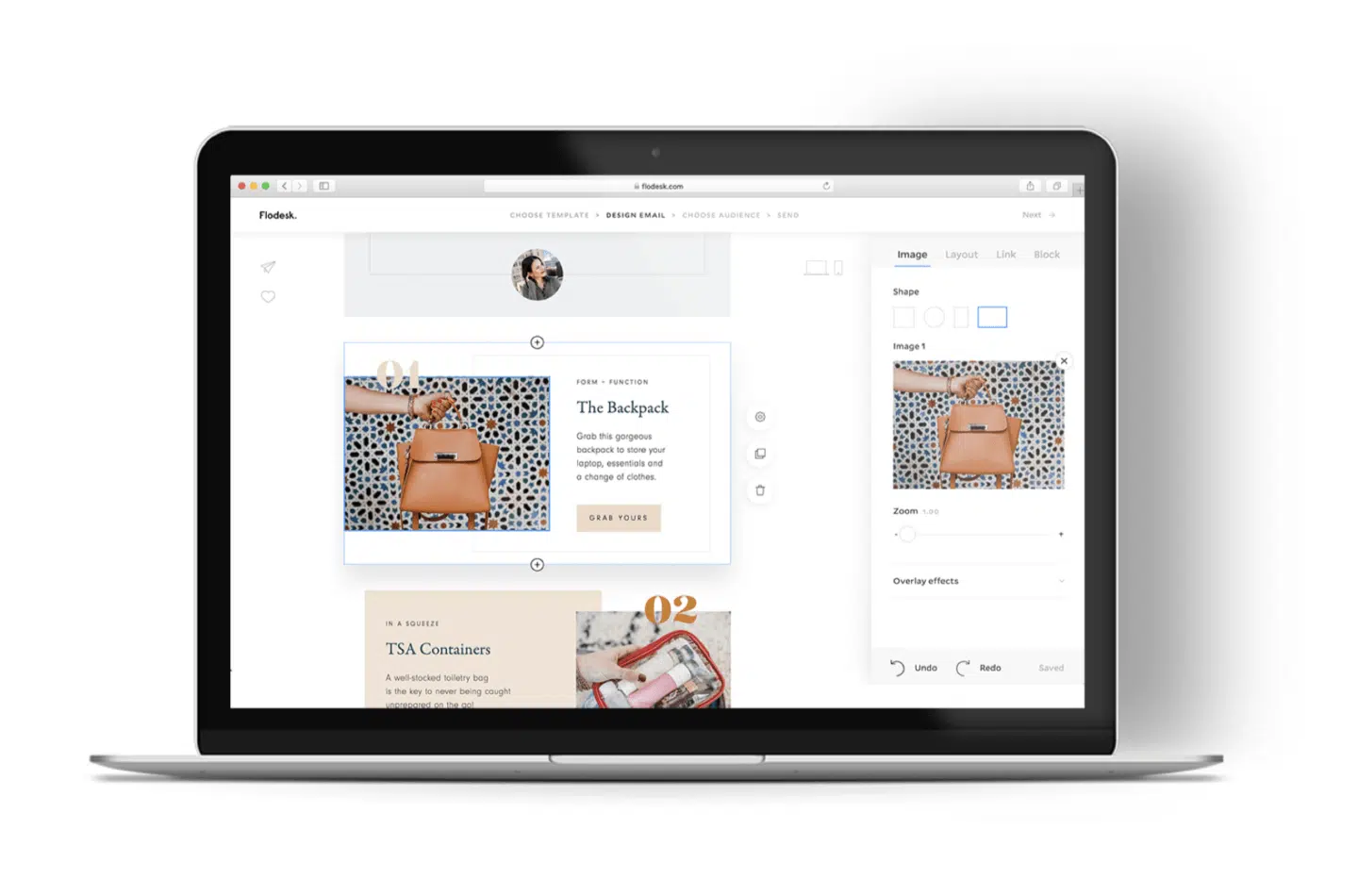
Pricing—Flodesk vs Mailchimp
Here’s where things get a little dependent on your situation. Mailchimp offers a free plan for email lists under 2,000 email addresses. So if you are a small business and really bootstrapping and trying to keep your expenses low (I get it, I’ve been there!), that is definitely a perk for Mailchimp. After you exceed 2,000 subscribers on Mailchimp, the pricing plan goes up as follows:
Essentials: $9.99/month for up to 50,000 subscribers
Standard: $14.99/month for up to 100,000 subscribers
Flodesk, on the other hand, does not offer a free plan. They do offer a 30-day free trial, no credit card required, so you can really test it out and make sure you like it. Which honestly, once you try Flodesk you’re going to be like, ew, Mailchimp! (Said in my best ew David Schitt’s Creek voice)
Flodesk has a flat pricing model of $38 per month, with unlimited subscribers. However, you can use my referral link to lock in a 50% off rate of $19 per month for your first year with them. And while $19/month is more expensive than even Mailchimp’s standard plan, I 100% think it’s worth it if you’re able to budget for that in your business expenses.
Use my referral link to get a 14-day free trial of Flodesk and lock in the half off rate of $19/month for your first year!
A/B Testing—Flodesk vs Mailchimp
This is the only category that Mailchimp clearly wins in. As of right now, Flodesk doesn’t offer the ability to do A/B testing, which is definitely a bummer. Mailchimp does offer A/B testing with any of its paid plans (not the free plan).
If you’re wondering why this is important, there’s a lot of gold to be found in the data of A/B testing! Things like which days of the week, time of day, or subject lines offer better open rates for your audience. As you get more into your email marketing strategy, this kind of data can be incredibly helpful.
I sent an email to Flodesk to check and see if they are planning on adding A/B testing as a capability so we’ll see what their response is.
Landing Pages
I think Flodesk and Mailchimp are fairly evenly matched when it comes to landing pages. If you’re wondering why you should even care about landing pages, they’re great for lead generation. You can direct people from social media or a Facebook ad to a downloadable freebie that’s hosted through a landing page, and collect their email so you can continue marketing to them. For example, when I was speaking at Alt Summit last year, a few minutes before my talk I realized I should make my presentation slides available to attendees (after they pay the price of giving me their email info, of course!). I quickly set up a Flodesk landing page, which you can check out here.
While Flodesk’s landing pages are in the beautiful and aesthetic style you’d expect from them, the one thing that is lacking is you can’t set up the URL to be a custom domain. So for example the landing page for my slides that I shared has the URL: https://view.flodesk.com/pages/5e5f3770289b5d00269750ce, and in order to easily direct people in the audience at my talk to this landing page, I had to set up a bitly and tell people to go to bit.ly/wtf-alt. Which gets the job done, it’s just that the URL is not as branded as I’d like it to be in an ideal world.
Mailchimp, in contrast, does allow you to use your domain for the landing pages.

Drip Campaigns
Drip campaigns is one of those email marketing features that might not be high on your list of priorities if you’re new to email marketing, but once you get into your email marketing strategy, you’ll definitely want to implement it! Personally, I have a couple different drip campaigns set up, like one that is a general welcome email that automatically goes out when someone subscribes to my email newsletter. The second one is something I’m experimenting with for my travel content, where I offer a sign up for people to receive a curated list of discounts for a given destination, and then my drip email sequence sends them more travel, restaurant, and hotel guides for that destination over a couple of weeks as they plan their trip.
I think both email service providers here are pretty even in terms of capabilities for drip campaigns. Flodesk is again probably a bit more intuitive to set up a drip campaign.
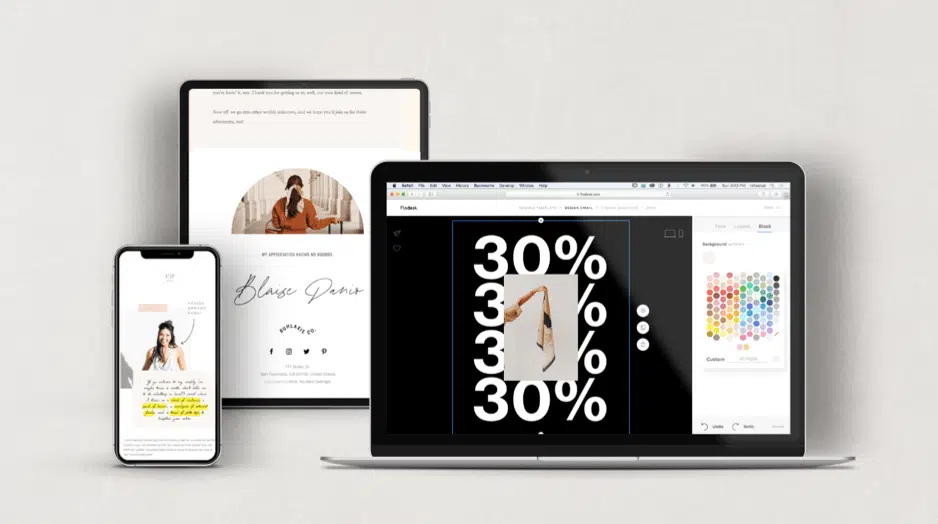
Customer Service Support
Sadly, I think the customer service support is equally lacking for both Flodesk vs Mailchimp. Flodesk is growing quickly, and I know they’re a small team, but receiving a response from them can take days to a week. Not ideal. Similarly, when you reach out to Mailchimp support, expect to wait at least a couple of days before receiving a response.
Flodesk does have a private Facebook group full of business owners sharing tips about Flodesk (like for example, suggestions on how they connect Flodesk with Zapier to automate parts of their business).

That’s the scoop on Flodesk vs Mailchimp! Overall, I think you can see why I’m such a fan of Flodesk and why I switched from Mailchimp to Flodesk. From the ease of use to the stunningly aesthetic templates, it’s my email platform of choice. Flodesk is a relatively new email marketing platform, and its female founders are shaking up the email marketing industry! We love to see it.
Flodesk offers a free 14-day trial, plus half off their monthly pricing for your first year if you use my referral link! So definitely give it a try, I think you’ll love it!
Like this Flodesk vs Mailchimp post? Stay tuned for more business-related content and check out the What The Fab Podcast in the meantime!

Elise Armitage is an entrepreneur and founder of What The Fab, a travel + lifestyle blog based in California. At the beginning of 2019, Elise left her corporate job at Google to chase her dreams: being an entrepreneur and helping women find fabulous in the everyday. Since then, she’s launched her SEO course Six-Figure SEO, where she teaches bloggers how to create a passive revenue stream from their website using SEO. Featured in publications like Forbes, Elle, HerMoney, and Real Simple, Elise is a firm believer that you can be of both substance and style.



